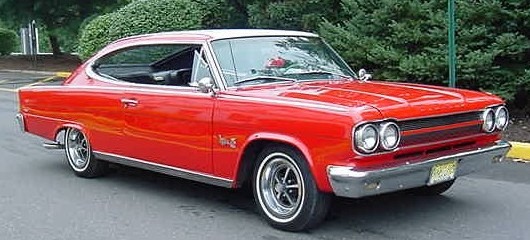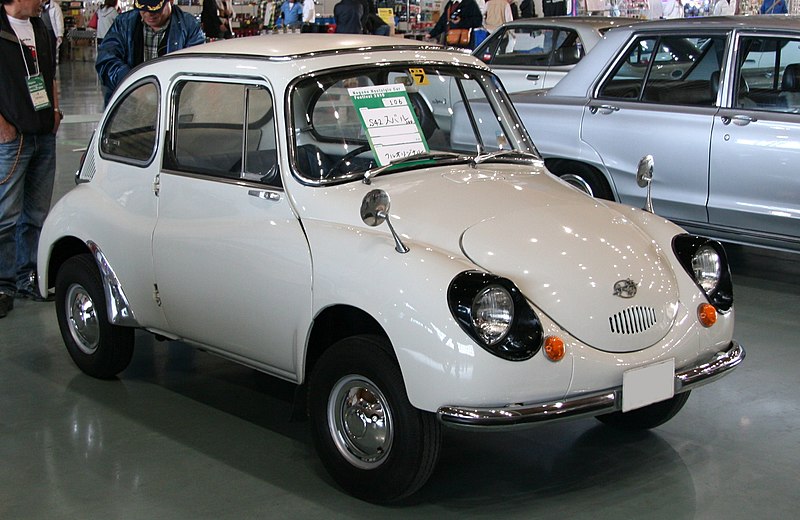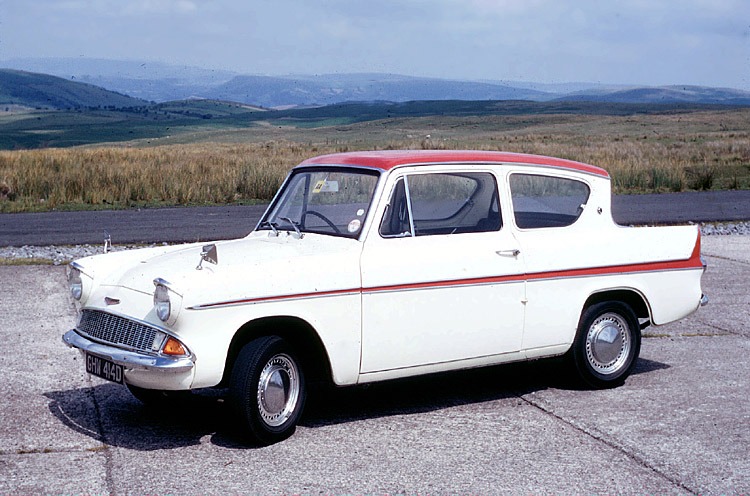The 1960s were a transformative era for the automotive industry, marked by groundbreaking designs, technological innovations, and an expanding consumer base. However, amidst these successes were some notable misfires. In this article, we’ll take a journey back in time to explore the worst cars of the 1960s, understanding what went wrong and why these models are remembered more for their faults than their features.
1. AMC Rambler Marlin (1965)

The American Motors Corporation (AMC) introduced the Marlin in 1965, hoping to capitalize on the burgeoning interest in sporty fastback cars. It was marketed as a personal luxury coupe.
However, the Marlin was a stylistic misadventure. It was based on the mid-sized Rambler Classic, leading to a disproportionate and awkward appearance. The Marlin’s performance didn’t match its sporty pretensions either, with lackluster engine options and mediocre handling. Its sales figures were disappointing, and it was discontinued in 1967.
Even AMC designer Bob Nixon called it “one of our worst production cars.”
2. Chevrolet Corvair (1960-1961)
The Chevrolet Corvair of the early 1960s, particularly the 1960 and 1961 models, became notorious for safety concerns. Ralph Nader, a well-known political activist and consumer advocate, deemed the car “Unsafe at Any Speed” in his 1965 book. He especially criticized the car’s rear-engine design and its swing-axle rear suspension, which were blamed for numerous accidents due to their tendency to cause the car to lose rear-wheel traction and spin out of control.
These design flaws posed serious risks. The car’s tendency to flip over during sudden moves and a steering column design that could be dangerous in a crash were major concerns.
The situation was so alarming that by the time Nader’s book was published, General Motors faced over 100 lawsuits related to the Corvair. This car’s safety issues were so significant that they played a role in the establishment of the National Highway Traffic Safety Administration in the U.S., along with the introduction of various vehicle safety regulations.
3. Hillman Imp (1963)
The 1963 Hillman Imp stands out, but not for good reasons. It was Britain’s response to the successful Mini, but it fell short in many aspects. It’s one of the few cars that’s been linked directly to a company’s downfall.
The Imp unfortunately became a financial nightmare for its maker, Rootes Group, leading to Chrysler taking over. A lot of its financial woes were due to some unconventional choices, like placing the engine in the rear and opting for a rear-wheel-drive layout – odd for a car of its class.
On top of that, the Imp was plagued with reliability issues. Owners frequently faced problems like overheating engines, and gearboxes and water pumps that failed too often. Given these troubles, it’s not surprising that the Imp fell far short of matching the Mini’s sales success.
4. Amphicar (1961)
The 1961 Amphicar tried to be a jack-of-all-trades by being both a car and a boat, but it turned out to be a master of neither. This vehicle was certainly innovative – if executed well, more people would certainly buy it because who doesn’t want a car and a boat in one? However, it had a lot of flaws.
On water, the Amphicar was rather sluggish, managing just 7 knots, and it wasn’t exactly a speedster on land either, with a top speed of only 70 mph. Its performance as a boat was also hindered by its steering system, which relied solely on its front wheels, making it less agile than a typical boat.
There’s one great thing about it, though: you could park it in the water, a feature that was as cool as it was unique.
5. Subaru 360 (1968)
The 1968 Subaru 360 may have found success in Japan, but its reception in North America was a different story. This little car made it to the U.S. market mainly because its lightweight design skirted around certain American automotive safety standards. Critics didn’t hold back, labeling it the “ugliest car” and pointing out its painfully slow acceleration – taking 37.5 seconds to go from 0 to 60 mph.
Safety-wise, the Subaru 360 didn’t inspire much confidence either. Its structure was so frail that in crash tests at just 30 mph, the bumper was almost ineffective. With all these factors combined, it’s not hard to see why the 360 is often remembered as one of the worst cars of the 60s.
6. Ford Anglia (1962)
Ford, as one of the oldest car companies, has had its share of ups and downs. The Anglia, unfortunately, falls into the latter category, often considered the worst Ford of the 1960s.
Issues like poor handling and unresponsive steering plagued Anglia. Despite these significant drawbacks, Anglia’s design does stand out. Its unique appearance sets it apart from other cars on the road, giving it a distinctive, if not necessarily admired, place in automotive history.
7. NSU Ro 80 (1967)
The NSU Ro 80 was a forward-thinking car featuring a sleek, aerodynamic design and a revolutionary Wankel rotary engine. However, it was this very engine that became its Achilles’ heel.
The Ro 80’s engine suffered from severe reliability issues, including rapid wear of the rotor tip seals, leading to poor fuel economy and frequent breakdowns. Despite its innovative design, the Ro 80’s engine problems tarnished its reputation and contributed to NSU’s financial troubles.
8. Dodge Dart (1962)
The early 60s Dodge Dart, initially intended to be a compact car, missed its mark. While later years saw improvement, the initial models were criticized for their oversized bodies and underwhelming performance, especially in the compact car market where nimble and economical were key.
The Dart certainly had the muscle under the hood, with engine options that included a powerhouse delivering over 400 hp, solidifying its status as a muscle car. However, its external styling was a different story and didn’t receive the same positive reception.
The Dart’s design was quite unique for its time, featuring a front end with droopy headlights that lent the car a somewhat comical look. The rear design didn’t help either, giving the impression that the car was trying to go in two different directions at once. These styling choices led to mixed reactions, prompting Dodge to quickly revisit the design board. As a result, they rolled out a redesigned version for the 1963 model year.
9. Plymouth Valiant (1961-1962)
The 1961 Plymouth Valiant was not without its own set of problems. A notable issue was its tendency to overheat, posing a risk to drivers. So, they tried to improve its next release.
However, they missed the mark again with their 1962 version. It had a questionable design, which can best be described as a haphazard combination of various styling elements. The result didn’t do the car any favors in terms of aesthetics.
Its appearance was a bit off-kilter, with its oddly proportioned bustle-back trunk, peculiar taillights, and fender bulges that seemed out of sync with the rest of the car’s design. Regarding performance, the Valiant was just average, equipped with an inline-6 engine that produced between 101 and 145 hp. This was barely sufficient for a car weighing 2,750 lbs, leaving much to be desired in terms of driving dynamics.
But despite its rocky start, the Valiant line grew in popularity over time as Plymouth continued to refine and improve the design.
10. Plymouth Fury (1961)
The 1961 Plymouth Fury, much like the Valiant, appeared to be a mishmash of daring design experiments. Living up to its fierce name, the Fury featured a front design that gave it a look of constant aggression, thanks in part to the exaggerated ‘brows’ over the headlights.
These distinctive overhangs weren’t just limited to the front; they extended around the sides and continued to the back of the car. Plymouth aimed for a stylish touch with the Fury’s sloped roofline. However, this design choice resulted in a compromise on practicality, notably reducing headroom in the rear. The only exception to this was if you opted for the convertible model, which naturally offered more headspace.
Despite its bold design, the Fury’s practical limitations made it a standout example of form over function in the early 1960s automotive landscape.
11. Maserati Mistral (1967)
The 1967 Maserati Mistral encapsulated Italian design elegance but was let down by its execution. While it boasted a stunning body and impressive power, the Mistral was notorious for its electrical and mechanical reliability issues.
These problems and its high cost made it a challenging car for even enthusiasts to love.
12. Chrysler Imperial Crown Southampton (1960)
The 1960 Imperial Crown Southampton was Chrysler’s attempt to make a mark in the premium automobile segment, aiming to rival the likes of Cadillac. However, the car’s over-the-top styling raises questions about the automotive preferences of that era.
Its design was quite a statement, but it could have been better. Its fins, a common design element of the time, already seemed outdated even when the car was released. The placement of the tail lights at the very ends of these fins was an unconventional choice that didn’t quite resonate with automotive aesthetics.
The car’s designer, Virgil Exner, himself acknowledged the questionable design, once referring to it as a ‘Frankenstein.’
13. Mercury Comet Cyclone (1964)
The 1964 Mercury Comet Cyclone finds itself in the shadows of the muscle car era of the ’60s, a time celebrated for introducing some of the most iconic and powerful muscle cars in history.
In its highest trim, the Cyclone came equipped with a 289 cubic-inch V8 engine, but it only churned out 271 hp. This figure paled compared to the output of contemporaries like the Pontiac GTO.
Consequently, the Cyclone struggled to attract buyers in a market brimming with more compelling options. By August 1964, Mercury had only managed to build 7,454 Cyclones, a number significantly lower than the approximately 32,000 Pontiac GTOs produced in the same timeframe. This stark contrast in production numbers highlights the Cyclone’s struggle to stand out in a fiercely competitive segment.
Conclusion
The 1960s were a period of great innovation and experimentation in the automotive world. However, not all experiments result in success. The cars discussed here were created with an ambitious, sometimes groundbreaking intent but were ultimately flawed. These models remind us that progress often comes with setbacks and that failure is another step toward success.




